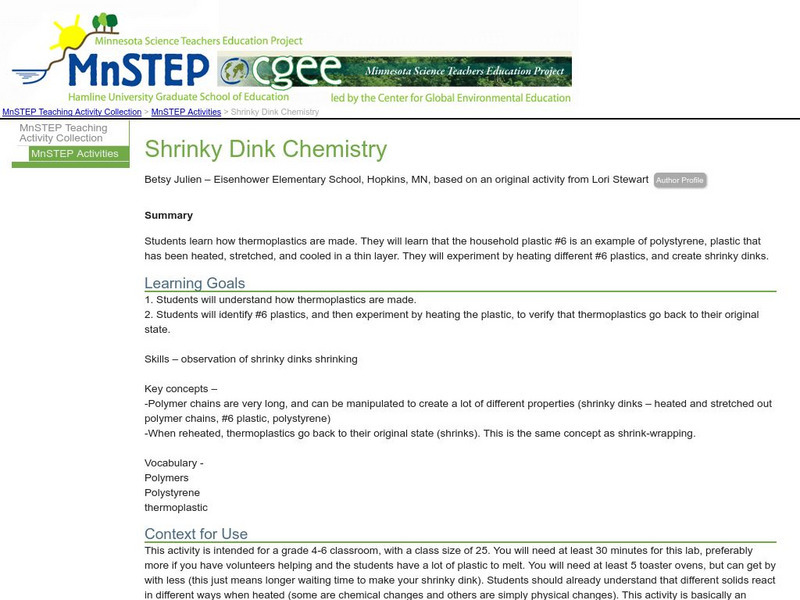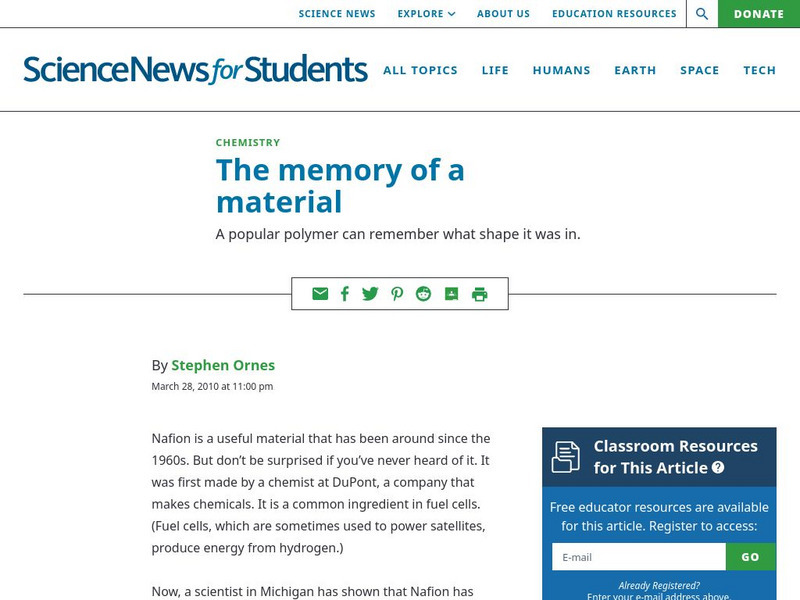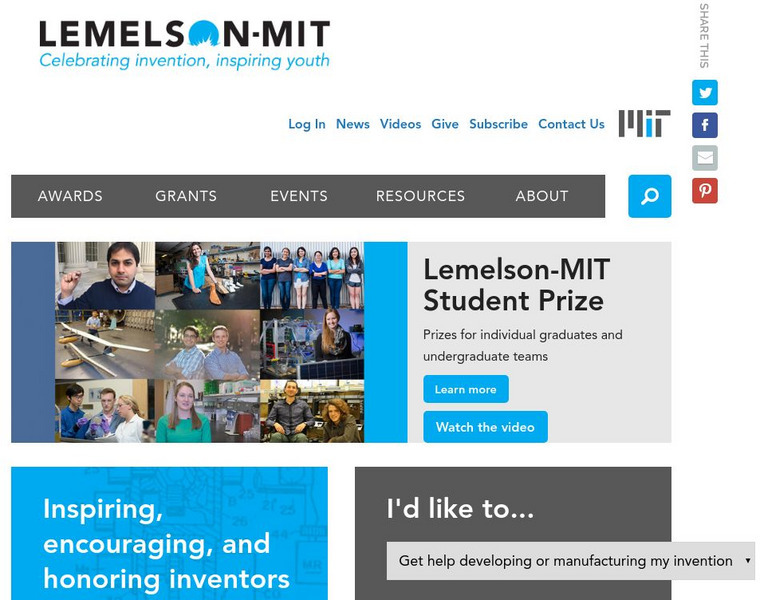TeachEngineering
Teach Engineering: Focus on Fabrics: Putting Materials to Good Use
The goal is for students to understand the basics of engineering associated with the use, selection, and properties of fabrics. A wide variety of natural and synthetic fibers are used in our clothing, home furnishings and in our travel...
TeachEngineering
Teach Engineering: Battle of the Beams
Students explore the properties of composites using inexpensive materials and processing techniques. They create beams using Laffy Taffy and water, and a choice of various reinforcements (pasta, rice, candies) and fabricating...
Sophia Learning
Sophia: Bill Nye Demonstration: Happy and Unhappy Ball
What happens when a ball bounces? Learn about liquid nitrogen as Bill Nye the Science Guy demonstrates what happens to everyday materials when placed in it. [0:22]
Science Buddies
Science Buddies: Slime Chemistry
Have you ever wondered how fun toys like Silly Putty, Gak, and Slime are made? These products are so much fun because of the properties of polymers, which make them delightfully bouncy, stretchy, sticky, moldable, breakable, hard, soft,...
Discovery Education
Discovery Education: 3 M Young Scientist Lab: Sandwich Bag Dart Board
Sharp Pencils and water-filled sandwich bags demonstrate the nature of certain polymers.
Concord Consortium
Concord Consortium: Stem Resources: The Tree of Life's Molecules
An interactive activity where you can zoom in to explore the macromolecules present in organisms. Learn about proteins, carbohydrates, lipids, and nucleic acid as you investigate the molecular structure of these types of macromolecules....
Concord Consortium
Concord Consortium: Stem Resources: Plastic Forces
This simple interactive tool lets students explore what happens to the long molecular chains in a plastic polymer material when forces of varying intensity are exerted on it.
American Chemical Society
American Chemical Society: The Bakelizer [Pdf]
Find out all you want to know about the revolutionary development of Bakelite, the first plastic created entirely from chemicals. Included is a biography of the inventor of Bakelite, Leo Baekeland.
Massachusetts Institute of Technology
Mit: Open Course Ware: Courses: Polymer Science Laboratory
College-level chemical engineering course highlighting polymers. Course topics focus on the range of properties of polymers, methods of synthesis, and physical chemistry. Course features include a list of related readings and a large...
Chiral Publishing
Chiral Publishing: An Introduction to Chemistry: Addition Polymers
This quick overview of addition polymers focuses on the three stages of creation. See step by step how the common polymer polyethylene is made. Also find links to other chemistry topics.
Chiral Publishing
Chiral Publishing: An Introduction to Chemistry: Synthetic Polymers: Audio Book
This short audio book describes some common synthetic polymers and their chemical formulas. Find links for animations, tutorials, and power points on many other chemistry topics.
Science Education Resource Center at Carleton College
Serc: Mn Step: Where in the World Can I Find Plastic Polymers. Why Are They Used?
An investigation of where plastic polymers can be found in everyday life. After identifying them, students test them to learn about their properties, then try some online activities.
Science Education Resource Center at Carleton College
Serc: Polymers & Plastics: Classification & Models
Students will use their prior knowledge about changes of matter including physical and chemical changes to examine and categorize various types of plastics (polymers). They will identify how their chemical properties allow them to have...
Science Education Resource Center at Carleton College
Serc: Mn Step: Shrinky Dink Chemistry
In this lesson, students first learn about thermoplastics, and about polystyrene in particular, which is a #6 plastic. They will then heat different #6 plastics to create shrinky dinks. As they are heated, they shrink, which is a...
Science Education Resource Center at Carleton College
Serc: Investigating Polymers: Comparing Two Liquid Glue Based Polymers
For this experiment, students will work in small groups to create two different polymers, similar to Flubber and Silly Putty, using Elmer's glue, liquid laundry starch, and Borax. They will then compare the properties of the two...
Society for Science and the Public
Science News for Students: The Memory of a Material
Describes the properties of a synthetic polymer, Nafion, which can 'remember' shapes that it takes, based on the temperature.
TED Talks
Ted: Ted Ed: From Dna to Silly Putty, the Diverse World of Polymers
Polymers occur both naturally- our DNA is a polymer- and synthetically, like plastic, Silly Putty, and styrofoam. Jan Mattingly explains how polymers have changed our world. [4:59]
BioMan Biology
Bio Man Biology: Life Chemistry Quizzes
Two multiple-choice quizzes, one on the processes and types of biological molecules, the other on the structure and replication of DNA.
Museum of Science
Museum of Science and Industry: Online Science: Activities: Make Slime
Step-by-step instructions, with photos, of how to create slime made of polymer chains using Borax and white glue.
Concord Consortium
Concord Consortium: Molecular Workbench Showcase: The Tree of Life's Molecules
Explore macromolecules and the smaller molecules that make up living organisms in this module.
Other
San Diego Plastics, Inc.: Polyethylene
The features, applications, and the fabrication process of high density and low density polyethylenes are listed and described.
Other
Moorland School: Earth Science Zone: Polymers
A webpage showing how the double bonds of alkenes can open up to form polymers.
Massachusetts Institute of Technology
Mit: Inventor of the Week: Wallace Carothers
This site from the Massachusetts Institute of Technology contains information on Wallace Hume Carothers and his invention of nylon.



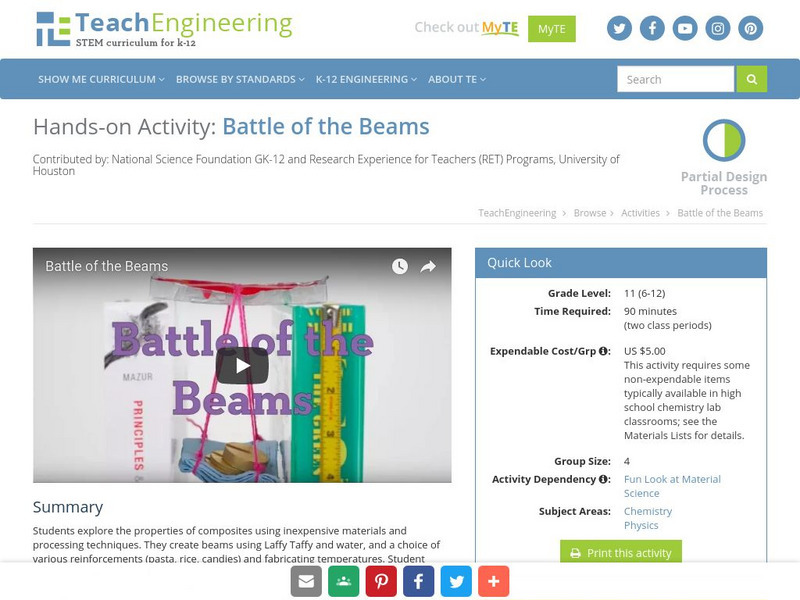
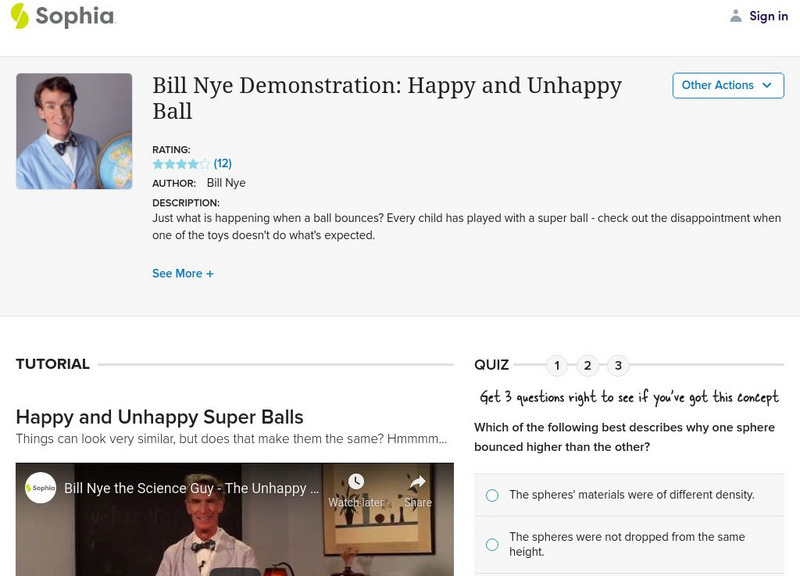



![American Chemical Society: The Bakelizer [Pdf] Handout American Chemical Society: The Bakelizer [Pdf] Handout](http://content.lessonplanet.com/resources/thumbnails/456091/large/bwluav9tywdpy2symdizmdeyny0xmte3mdk4lwcwy3uxni5qcgc.jpg?1674856933)



